Temple of Luxor
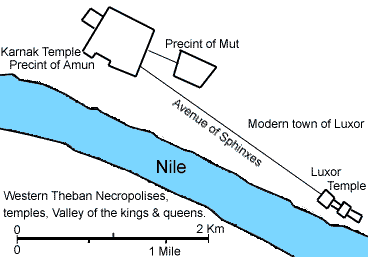


Entrance
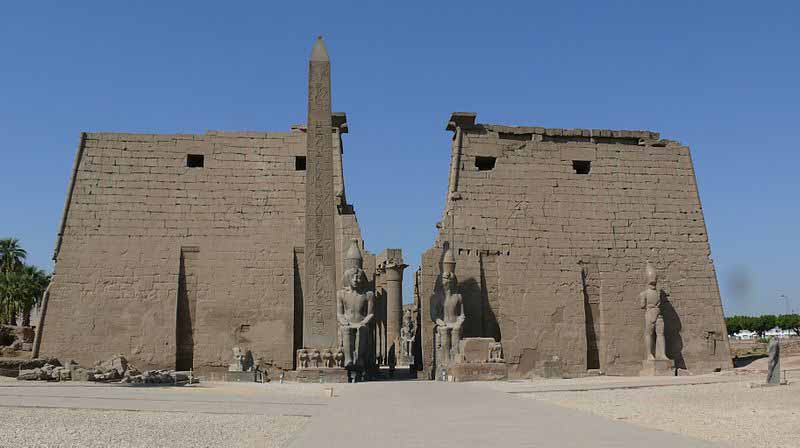

Statue at Temple Entrance

The red granite obelisk

Sitting Ramesses II Colossus inside Luxor Temple
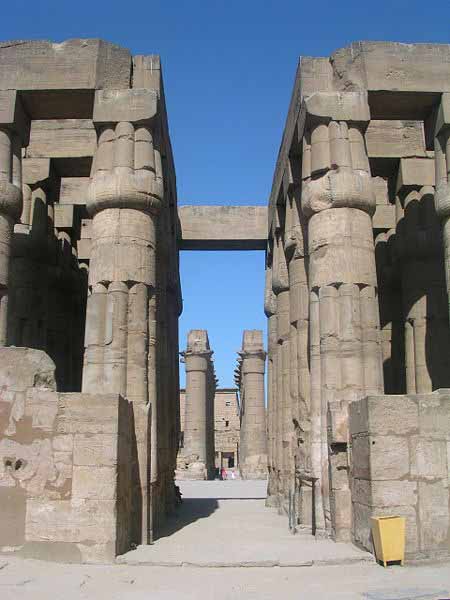
The central corridor of the temple
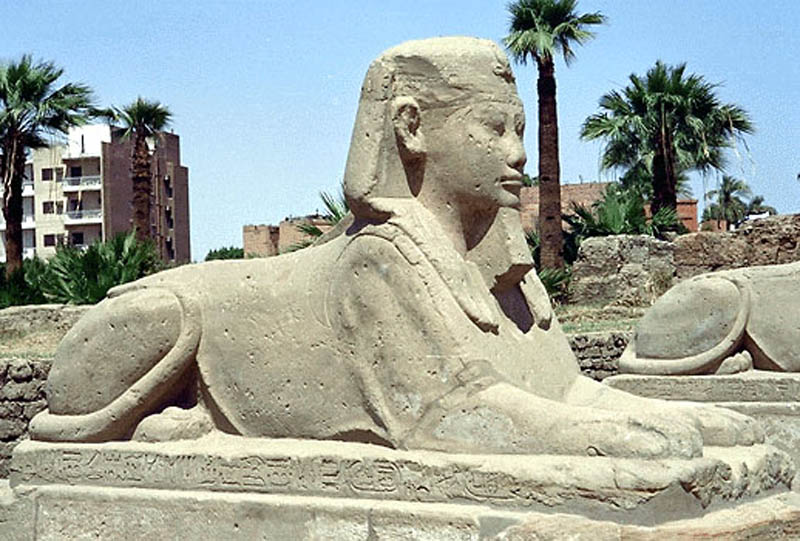
Well preserved sphinx
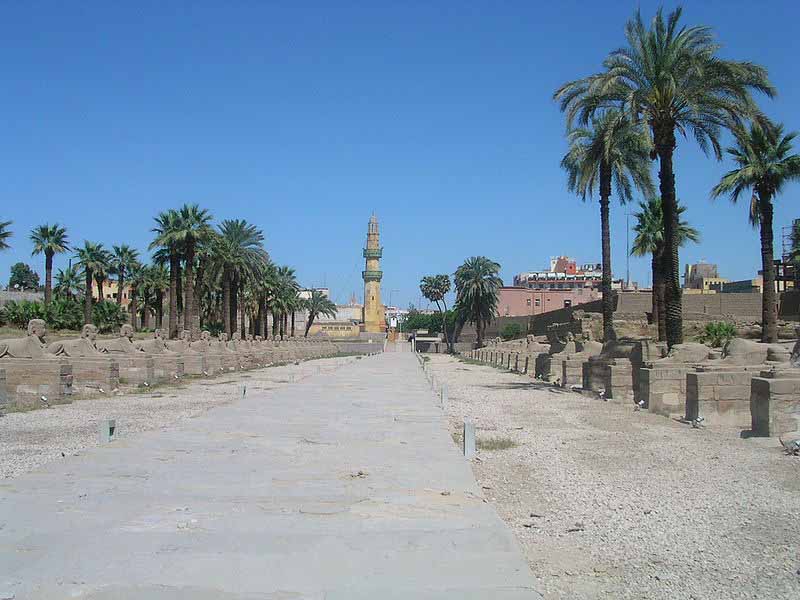
Hundreds of sphinxes once lined the road to nearby Karnak
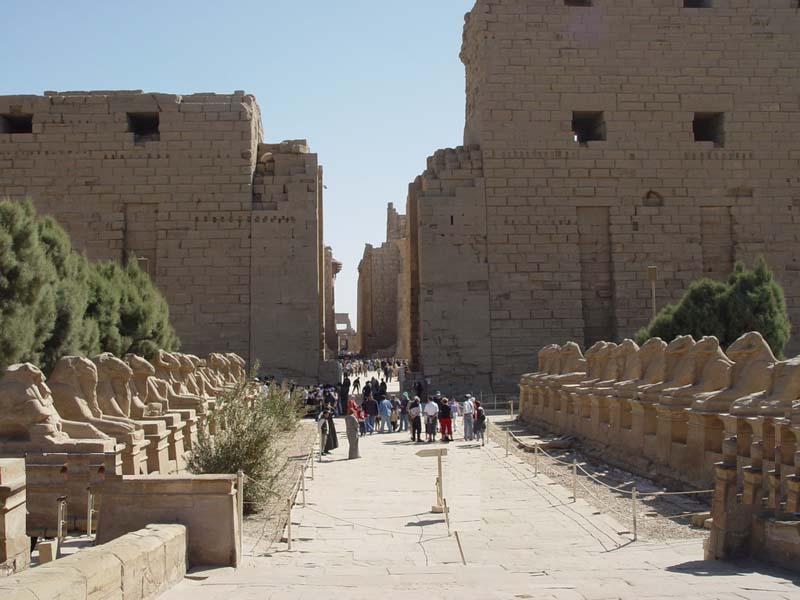
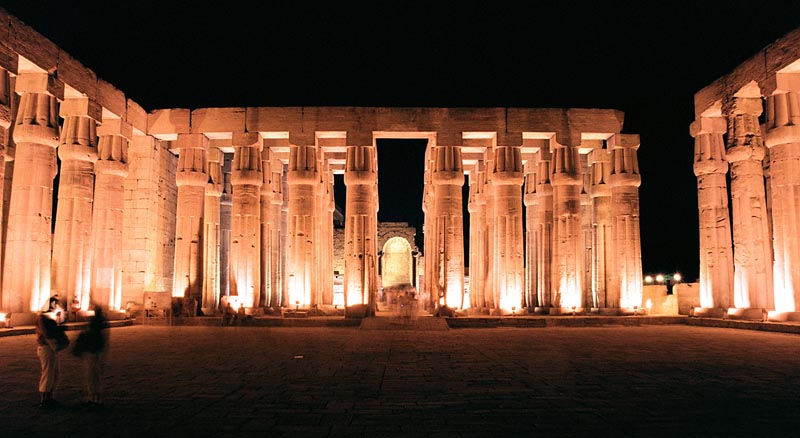
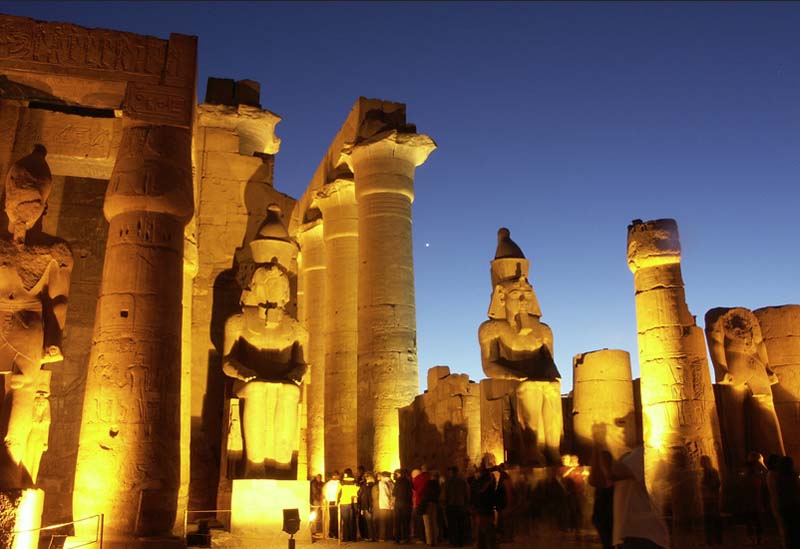
The Temple of Luxor was formerly known as Opet (meaning 'the harem'). It is the place where Amun-Re celebrated his divine marriage during the Festival of Opet The festival took place once a year and was a marriage between king (pharaoh) and god-king (Amun-Re). The temple front was built by Ramesses II and carries a relief showing his great victory against the Hittites at the Battle of Kadesh. The axis of the layout is approximately east-west but makes two slight changes direction twice along the route from the pylon gate to the inner sanctum. Reliefs beside the walkway illustrate the festival procession from Karnak to Luxor, along the great processional route which joined the two temples.
Luxor Temple is a large Ancient Egyptian temple complex located on the east bank of the Nile River in the city today known as Luxor (ancient Thebes) and was founded in 1400 BCE. For centuries Thebes was once known as the capital of the known world. Known in the Egyptian language as ipet resyt, or "the southern sanctuary." In Luxor there are six great temples, the four on the left bank are known to travelers and readers of travels as Goornah, Dayr-eh-Baharee, the Ramesseum, and Medinet Haboo; and the two temples on the right bank are known as the Karnak and Luxor. To the rear of the temple are chapels built by Tuthmosis III, and Alexander the Great. During the Roman era, the temple and its surroundings were a legionary fortress and the home of the Roman government in the area.
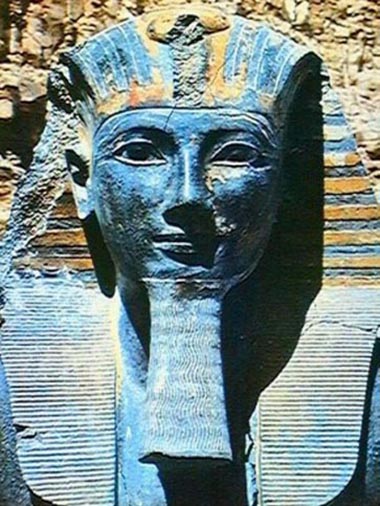
Ramesseum
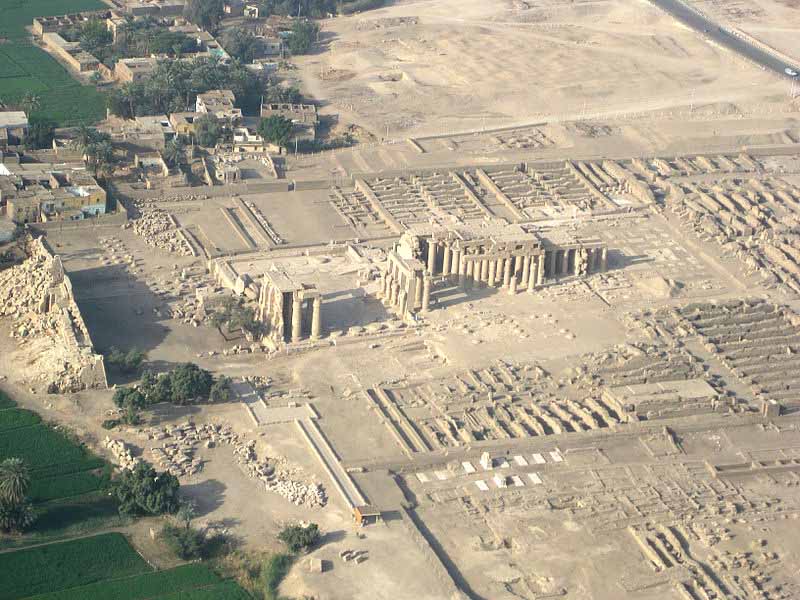

The Ramesseum is the memorial temple (or mortuary temple) of Pharaoh Ramesses II ("Ramesses the Great", also spelled "Ramses" and "Rameses"). It is located in the Theban necropolis in Upper Egypt, across the River Nile from the modern city of Luxor. The name was coined by Jean-Francois Champollion, who visited the ruins of the site in 1829 and first identified the hieroglyphs making up Ramesses's names and titles on the walls. It was originally called the House of millions of years of Usermaatra-setepenra that unites with Thebes-the-city in the domain of Amon.
Ramesses II modified, usurped, or constructed many buildings from the ground up, and the most splendid of these, in accordance with New Kingdom Royal burial practices, would have been his memorial temple: a place of worship dedicated to pharaoh, god on earth, where his memory would have been kept alive after his death. Surviving records indicate that work on the project began shortly after the start of his reign and continued for 20 years.
The design of Ramesses's mortuary temple adheres to the standard canons of New Kingdom temple architecture. Oriented northwest and southeast, the temple itself comprised two stone pylons (gateways, some 60 m wide), one after the other, each leading into a courtyard. Beyond the second courtyard, at the centre of the complex, was a covered 48-column hypostyle hall, surrounding the inner sanctuary.
An enormous pylon (gateways, some 60 m wide) stood before the first court, with the royal palace at the left and the gigantic statue of the king looming up at the back.
As was customary, the pylons and outer walls were decorated with scenes commemorating pharaoh's military victories and leaving due record of his dedication to, and kinship with, the gods. In Ramesses's case, much importance is placed on the Battle of Kadesh (ca. 1285 BC); more intriguingly, however, one block atop the first pylon records his pillaging, in the eighth year of his reign, a city called "Shalem", which may or may not have been Jerusalem. The scenes of the great pharaoh and his army triumphing over the Hittite forces fleeing before Kadesh, as portrayed in the canons of the "epic poem of Pentaur", can still be seen on the pylon.
Only fragments of the base and torso remain of the syenite statue of the enthroned pharaoh, 62 feet (19 metres) high and weighing more than 1000 tons. This was alleged to have been transported 170 miles over land. This is the largest remaining colossal statue (except statues done in situ) in the world. However fragments of 4 granite Colossi of Ramses were found in Tanis (northern Egypt). Estimated height is 69 to 92 feet (21 to 28 meters). Like four of the six colossi of Amenhotep III (Colossi of Memnon) there are no longer complete remains so it is based partly on unconfirmed estimates.
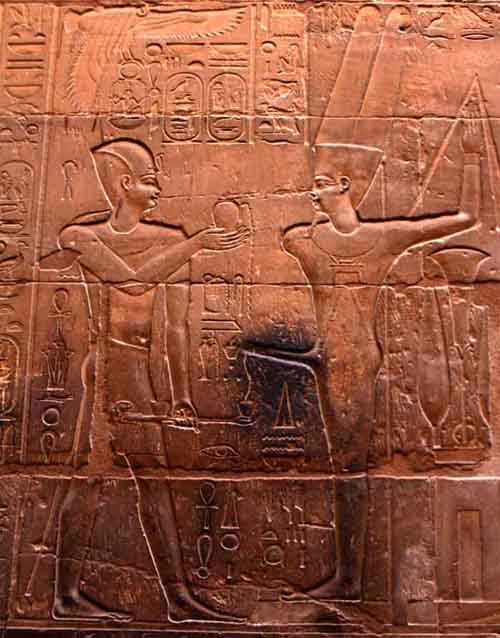
Remains of the second court include part of the internal facade of the pylon and a portion of the Osiride portico on the right. Scenes of war and the rout of the Hittites at Kadesh are repeated on the walls. In the upper registers, feast and honor of the phallic god Min, god of fertility. On the opposite side of the court the few Osiride pillars and columns still left can furnish an idea of the original grandeur. Scattered remains of the two statues of the seated king can also be seen, one in pink granite and the other in black granite, which once flanked the entrance to the temple. The head of one of these has been removed to the British Museum.
Thirty-nine out of the forty-eight columns in the great hypostyle hall (m 41x 31) still stand in the central rows. They are decorated with the usual scenes of the king before various gods. Part of the ceiling decorated with gold stars on a blue ground has also been preserved.
The sons and daughters of Ramesses appear in the procession on the few walls left. The sanctuary was composed of three consecutive rooms, with eight columns and the tetrastyle cell. Part of the first room, with the ceiling decorated with astral scenes, and few remains of the second room are all that is left.
Adjacent to the north of the hypostyle hall was a smaller temple; this was dedicated to Ramesses's mother, Tuya, and his beloved chief wife, Nefertari. To the south of the first courtyard stood the temple palace. The complex was surrounded by various storerooms, granaries, workshops, and other ancillary buildings, some built as late as Roman times.
A temple of Seti I, of which nothing is now left but the foundations, once stood to the right of the hypostyle hall. It consisted of a peristyle court with two chapel shrines. The entire complex was enclosed in mud brick walls which started at the gigantic southeast pylon.
A cache of papyri and ostraca dating back to the third intermediate period (11th to 8th centuries BC) indicates that the temple was also the site of an important scribal school.
The site was in use before Ramesses had the first stone put in place: beneath the hypostyle hall, modern archaeologists have found a shaft tomb from the Middle Kingdom, yielding a rich hoard of religious and funerary artifacts.
Unlike the massive stone temples that Ramesses ordered carved from the face of the Nubian mountains at Abu Simbel, the inexorable passage of three millennia was not kind to his "temple of a million years" at Thebes. This was mostly due to its location on the very edge of the Nile floodplain, with the annual inundation gradually undermining the foundations of this temple, and its neighbors. Neglect and the arrival of new faiths also took their toll: for example, in the early years of the Common Era, the temple was put into service as a Christian church.
This is all standard fare for a temple of its kind built at that time. Leaving aside the escalation of scale - whereby each successive New Kingdom pharaoh strove to outdo his predecessors in volume and scope - the Ramesseum is largely cast in the same mould as Ramesses III's Medinet Habu or the ruined temple of Amenhotep III that stood behind the "Colossi of Memnon" a kilometre or so away. Instead, the significance that the Ramesseum enjoys today owes more to the time and manner of its rediscovery by Europeans.
EGYPT TEMPLES INDEX
EGYPT INDEX
ANCIENT CIVILIZATIONS
ALPHABETICAL INDEX
CRYSTALINKS HOME PAGE
PSYCHIC READING WITH ELLIE
BOOK: THE ALCHEMY OF TIME
DONATION TO CRYSTALINKS
ADVERTISE ON CRYSTALINKS
















